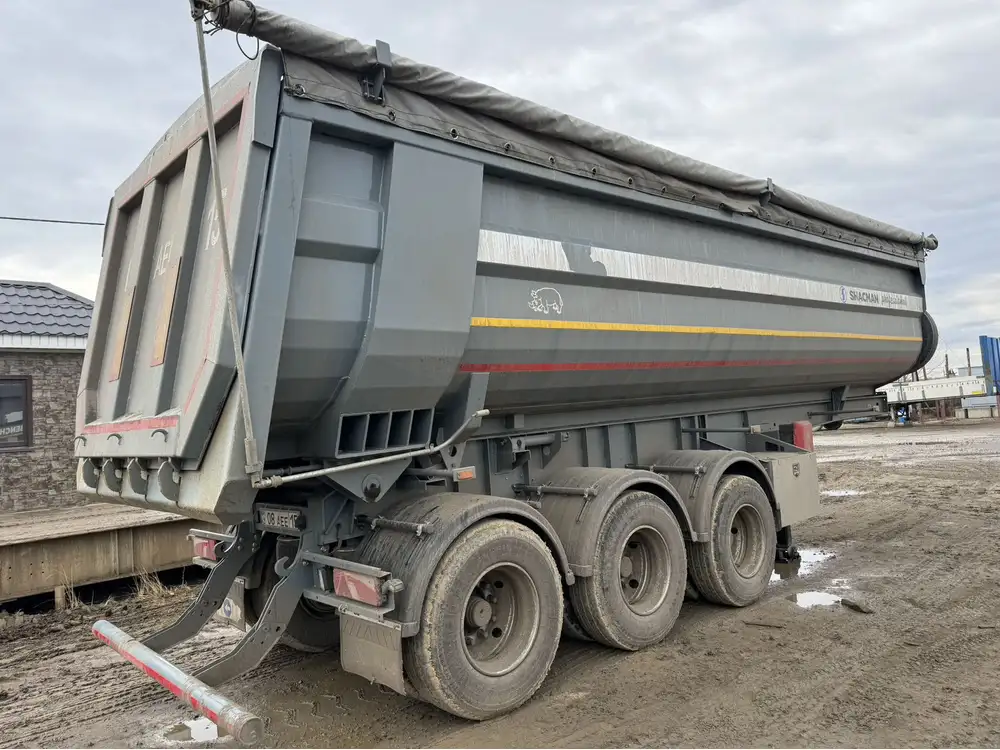When it comes to logistics, transportation, and freight management, understanding the capacity of semi-trailers is critical for efficient shipping operations. One of the most pressing questions manufacturers, shippers, and carriers often ask is, “How many pallets can you fit in a semi-trailer?” This inquiry not only impacts cost efficiency but also affects logistical planning, load optimization, and overall supply chain management.
Understanding Semi-Trailer Dimensions
To accurately determine how many pallets you can fit in a semi-trailer, it is essential to first understand the common dimensions and types of semi-trailers available in the market.
Standard Semi-Trailer Dimensions
- Length: The standard length of a semi-trailer ranges from 48 to 53 feet.
- Width: Typically, the width is around 8.5 feet.
- Height: The inside height can vary but is generally between 8 and 9 feet, allowing for variations in load height.
| Dimension | Standard Measurement |
|---|---|
| Length | 48 to 53 feet |
| Width | 8.5 feet |
| Inside Height | 8 to 9 feet |

Types of Semi-Trailers
Each type of semi-trailer can affect the pallet capacity significantly:
- Dry Van Trailers: Closed box trailers ideal for standard loads.
- Reefer Trailers: Refrigerated trailers for temperature-sensitive goods.
- Flatbed Trailers: Open trailers allowing various pallet configurations, but more challenging when determining pallet capacity.
Understanding the type of trailer in use is crucial as it dictates how pallets can be arranged and secured.
Pallet Dimensions and Configuration
Before diving into capacity calculations, acknowledging the standard measurements of pallets is necessary.
Standard Pallet Sizes
The most commonly used pallets in North America are:
- Grocery Pallet: 48” x 40”
- Europe Pallet: 47.2” x 31.5”
- Canadian Pallet: 48” x 48”
| Pallet Type | Dimensions |
|---|---|
| Grocery Pallet | 48” x 40” |
| Europe Pallet | 47.2” x 31.5” |
| Canadian Pallet | 48” x 48” |

Pallet Configuration
When considering how many pallets can be loaded into a semi-trailer, the configuration of how they are stacked is vital. Pallets can be placed side by side or stacked vertically, impacting capacity.
Single Stack vs. Double Stack
- Single Stack: Pallets are placed one on top of the other.
- Double Stack: This configuration has two pallets stacked, maximizing height but requiring careful weight distribution.
Calculating Pallet Capacity
To calculate the number of pallets a semi-trailer can hold, several factors need to be considered systematically.

Step 1: Measure the Usable Floor Space
For accurate calculations, it’s crucial to determine the usable floor space of a semi-trailer. For example, a 53-foot dry van trailer provides approximately 26 pallets of 48” x 40” dimensions when placed in a single layer.
Usable Floor Space Calculation:
- Trailer Length: 53 feet (636 inches)
- Trailer Width: 8.5 feet (102 inches)
Floor Space: [ \text{Total Area} = \text{Length} \times \text{Width} = 636 \text{inches} \times 102 \text{inches} = 64,632 \text{square inches} ]
Step 2: Pallet Footprint
Each standard grocery pallet covers an area of: [ \text{Pallet Area} = 48 \text{inches} \times 40 \text{inches} = 1,920 \text{square inches} ]
Step 3: Calculate Pallet Capacity
To find out how many single-stacked pallets fit into the trailer: [ \text{Total Pallets} = \frac{\text{Total Area}}{\text{Pallet Area}} ] [ \text{Total Pallets} = \frac{64,632}{1,920} \approx 33.67 \text{ pallets} ]
In reality, considering the actual arrangements and potential gaps, one could fit around 26 to 30 pallets comfortably.

Considerations for Loading
Here are several critical considerations when loading pallets into a semi-trailer:
- Weight Distribution: Ensure weight is evenly distributed to avoid accidents.
- Loading Technique: Use proper loading techniques to maximize space while maintaining safety.
- Securing the Load: Always secure pallets with straps or other securing methods to prevent shifting during transport.
- Regulatory Compliance: Adhere to weight regulations specific to your region to avoid fines and ensure road safety.
Stacking Height and Capacity
If operating under a double stack format due to a higher inside height (over 9 feet), it’s possible to double the number of pallets, although careful weight considerations must be made to avoid exceeding maximum allowable weight limits.
Practical Scenarios and Examples
To illustrate different configurations, let’s consider practical scenarios that reflect various operational needs.

Scenario 1: Grocery Load
When shipping grocery products, a company uses a 53-foot trailer:
- 26 pallets filled in a single layer.
- If stacked, they could theoretically fit 52, but must consider the maximum weight allowed.
Scenario 2: Furniture Load
Transporting furniture, which often involves bulky items:
- A lesser number of pallets (15-20), depending on dimensions and stacking potential.
Comparison Chart of Various Loads
| Type of Load | Pallet Configuration | Approx. Pallet Count |
|---|---|---|
| Grocery Products | Single Stack | 26-30 |
| Electronics | Single Stack | 20-24 |
| Heavy Machinery | Single Stack | 15-18 |
| Furniture | Spatially Optimized | 12-15 |

Final Thoughts
Understanding how many pallets fit in a semi-trailer is not merely an academic exercise; it holds significant implications for operational efficiency. By calculating trailer dimensions, pallet sizes, and effective loading techniques, businesses can optimize freight operations, reduce costs, and ultimately improve service delivery.
This deeper grasp empowers manufacturers, shippers, and transport operators alike to make informed decisions, ensuring they not only meet their logistical needs but also adapt flexibly to the ever-evolving marketplace and its demands. The art of loading is much like a puzzle, and those who master it will find themselves navigating the complexities of logistics with remarkable finesse.



